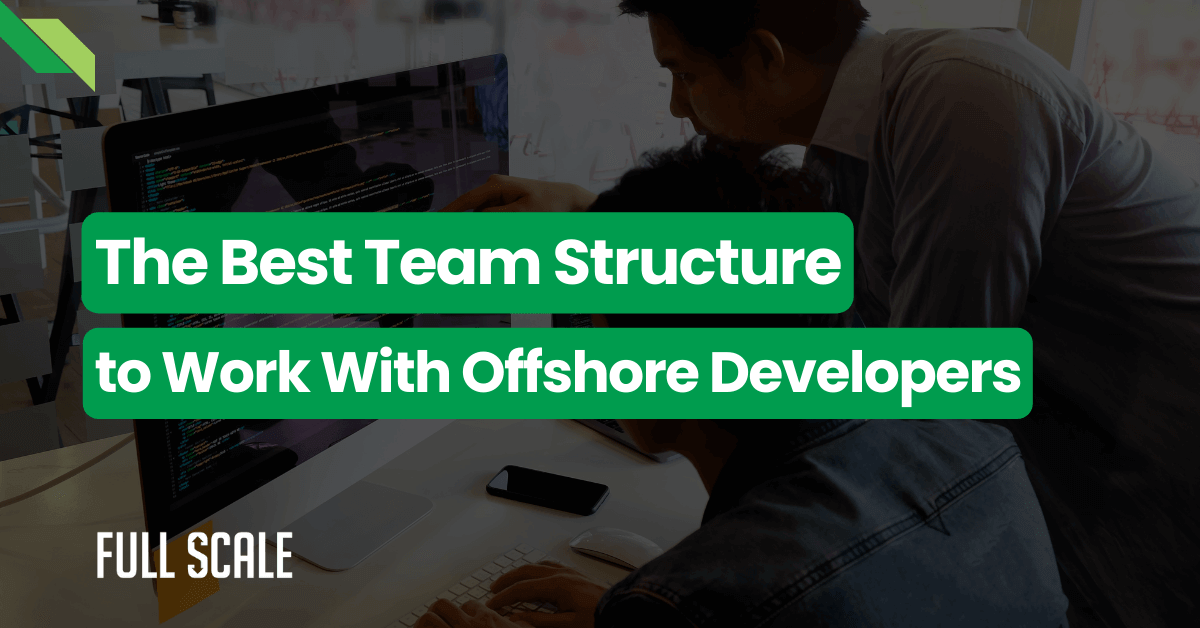Last Updated on 2025-10-05
Your engineering team just told you the “simple” login feature will take three weeks. Last month, a similar request took two days.
Your senior developer is working nights and weekends, but somehow delivery is getting slower, not faster.
Your product roadmap keeps getting pushed back, but you can’t figure out why. Sound familiar?
You’re watching your engineering team transform from your biggest competitive advantage into your biggest bottleneck. And the worst part? Most CTOs don’t recognize these warning signs until it’s too late.
What You'll Learn in This Article
Discover the critical warning signs that your engineering team is becoming a bottleneck—before it's too late to fix
3 Early Warning Signs
Spot declining velocity, knowledge concentration, and planning collapse 90 days before crisis hits
Real Impact Metrics
Learn how bottlenecks cause 40-60% velocity drops and missed revenue targets
Actionable Solutions
Get proven strategies to scale your team in weeks, not months—without the hiring nightmare
What Are the Signs of Engineering Team Bottlenecks?

Engineering team bottlenecks show three clear warning signs that appear 90-120 days before the crisis becomes obvious:
- Declining development velocity: Simple features take exponentially longer than before, with estimates becoming increasingly inaccurate
- Knowledge concentration risk: Senior developers become single points of failure, with critical system knowledge trapped in individual team members
- Planning horizon collapse: Engineering teams can’t commit to deliverables beyond the current sprint, making business planning impossible
These engineering capacity problems compound quickly. By the time leadership realizes the engineering team has become the constraint, they’re already 3–6 months behind on critical projects.
Here’s the thing: Engineering team bottlenecks don’t happen overnight. They develop predictably with clear warning signs that everyone ignores.
I’ve seen this exact pattern play out dozens of times helping tech companies scale their engineering teams. The good news? It’s completely preventable if you know what to look for.
Let me show you exactly how to identify when your engineering team is holding back growth—and what to do about it.
Warning Sign #1: Declining Development Velocity Creates Software Development Bottlenecks
Simple features take weeks instead of days. You know this one.
It starts innocently enough. Your product team asks for a “quick” adjustment to the user dashboard. Should be simple, right? Your developers estimated two days last time you did something similar.
Three weeks later, you’re still waiting.
When you ask what happened, you get an explanation that includes the words “edge cases,” “refactoring,” and “technical debt.” None of which were mentioned in the original estimate.
This is the canary in the coal mine.
When every “simple” request takes exponentially longer than expected, your team isn’t being difficult. They’re drowning in complexity that’s finally caught up with them. This is one of the clearest signs your development team needs help.
Here’s what’s actually happening: Your codebase has become a house of cards. Every new feature requires touching five other systems. Every change risks breaking something else. Your developers aren’t moving slower because they’re lazy—they’re moving slower because they’re terrified of breaking production.
This declining engineering productivity creates a vicious cycle. The slower your team moves, the more pressure they feel. The more pressure they feel, the more shortcuts they take. The more shortcuts they take, the worse the technical debt becomes.
The worst part? This pattern accelerates exponentially. The more you push “just one more feature” onto an overloaded team, the more technical debt accumulates. The more debt accumulates, the slower everything gets.
And before you know it, your competitors are shipping features in days while you’re stuck in weeks. This software development bottleneck directly impacts your ability to compete in the market.
Warning Sign #2: Knowledge Concentration Signals Engineering Capacity Problems
Are your senior developers the single points of failure?
Let’s talk about Sarah, your senior developer.
Sarah is brilliant. She wrote the core architecture three years ago. She knows where every skeleton is buried in the codebase. When something breaks at 2 a.m., Sarah fixes it.
She’s also a single point of failure that’s slowly destroying your business.
Here’s the pattern I see all the time when engineering teams are overloaded: Your best developers become knowledge monopolies. They’re the only ones who understand critical systems. Junior developers stop asking them questions because Sarah is “too busy.” Knowledge transfer stops happening naturally.
This knowledge concentration is one of the most dangerous engineering team bottleneck warning signs. Your technical team performance might look fine on the surface—until it doesn’t.
And then Sarah gets sick. Or takes vacation. Or—worst case—gets recruited by your competitor offering 30% more.
Your entire engineering operation grinds to a halt.
This isn’t Sarah’s fault. It’s an engineering capacity problem masquerading as a knowledge problem. When your senior developers are running at 120% capacity, they don’t have time to document systems, mentor junior developers, or share knowledge effectively.
They’re too busy being the hero who fixes everything. And that’s killing your team scalability.
The solution isn’t better documentation. It’s more capacity so your senior developers can actually do the strategic work they’re supposed to be doing—not fighting fires and being the single point of contact for everything.
Warning Sign #3: Loss of Planning Ability Shows Your Engineering Team Is Overloaded
Remember when your engineering team could commit to delivering features two sprints out? Maybe even plan a quarter ahead?
Those days are gone.
Now, when you ask about timelines, you get vague answers.
“It depends.”
“We’ll need to investigate.”
“Hard to say until we get into it.”
Your planning horizon has collapsed to whatever’s in the current sprint—and even that feels uncertain.
This is what engineering gridlock looks like from the business side.
Your sales team can’t commit to prospects because they don’t know when features will ship. Your product team can’t plan roadmaps because estimates are meaningless. Your executive team can’t make strategic decisions because they have no visibility into what’s actually possible.
This planning horizon collapse is one of the most visible signs your development team needs help. It affects every department in your company.
Here’s why this happens: When an engineering team is operating at or beyond capacity, they lose the ability to think strategically. Everything becomes reactive. They’re too busy dealing with today’s emergency to plan for next month’s deliverables.
The engineering capacity planning becomes impossible because the team is underwater. They can’t see far enough ahead to make realistic commitments.
This isn’t a communication problem. It’s a capacity crisis that’s finally visible to the business.
How to Know When Your Engineering Team Is Holding Back Growth?

These engineering team bottleneck warning signs directly impact business growth in measurable ways:
- Development velocity drops by 40-60% within 90 days of the first warning signs appearing. What used to take two days now takes a week. What used to take a week now takes a month.
- Engineering productivity metrics show declining output despite increased hours. Your developers are working harder but delivering less. Time tracking shows more hours logged, but velocity charts show fewer features shipped.
- Technical team performance reviews reveal burnout and frustration. Your best engineers start expressing concerns about sustainability. Exit interviews mention “unsustainable pace” and “constant firefighting.”
- Team scalability becomes impossible without major restructuring. You can’t just “add more people” because there’s no capacity to onboard them properly. New hires slow the team down instead of speeding it up.
When to hire more developers? When you see two or more of these warning signs simultaneously. Waiting until all three appear means you’re already in crisis mode.
Most CTOs think these are separate, unrelated problems. They’re not.
They’re three symptoms of the same underlying issue: Your engineering team has hit a capacity wall, and everything is starting to break down.
The companies that recognize these engineering team bottlenecks early and take action? They maintain their competitive advantage and keep shipping fast.
The companies that ignore these warning signs? They spend the next year stuck in crisis mode, watching competitors eat their lunch while they struggle to deliver basic features.
What Happens When You Ignore Engineering Team Bottlenecks?
Let me paint you a picture of what the next 90 days look like if you don’t address this engineering capacity problem now.
Your best developers start burning out. The really good ones start taking calls from recruiters. You lose one or two key people, which makes the capacity problem even worse. Now you’re not just dealing with an engineering team bottleneck—you’re dealing with a talent crisis.
Your product roadmap gets decimated. Features you promised customers get pushed back. Again. Sales starts missing targets because the product isn’t competitive. Marketing can’t promote new capabilities because engineering can’t deliver them.
Your technical debt compounds to the point where even simple changes require major refactoring. Your development velocity doesn’t just slow down—it crashes. What should take hours now takes days. What should take days now takes weeks.
And here’s the real kicker: By the time you decide to hire your way out of this mess, you’re already 6 months behind. Because hiring, onboarding, and ramping up new developers takes time you don’t have.
The cost of ignoring these software development bottlenecks? Companies typically lose 30-40% of their planned feature releases. Revenue targets get missed. Competitive advantages evaporate. Market opportunities disappear.
How to Scale Engineering Teams Without the Traditional Hiring Nightmare
Most companies try to solve engineering team bottlenecks by hiring locally. More job posts. Higher salaries. Better benefits.
But here’s what happens: You’re competing with every other tech company for the same limited pool of developers. The hiring process takes 3-4 months. And even after you hire someone, it takes another 3-6 months before they’re productive.
You don’t have that kind of time.
Here’s what I learned after helping 60+ tech companies break through these exact engineering capacity problems: The solution isn’t just adding more developers—it’s adding the right developers in the right way.
Traditional offshore outsourcing doesn’t work because it creates the same problems you’re trying to solve. More communication barriers. More project managers acting as middlemen. Less control over your own product. These are the exact things that create software development bottlenecks in the first place.
That’s exactly why we built Full Scale differently.
We don’t do project-based outsourcing. We do staff augmentation—meaning you get dedicated, full-time developers who work as a direct extension of your team. No middlemen. No communication bottlenecks. Just senior developers integrated into your Slack channels, your standups, and your workflow.
They’re your developers. You manage them. You direct them. But without the 6-month hiring cycle and the inflated U.S. salary costs.
This is how to hire more developers when you need engineering capacity immediately, not six months from now.
And How Does This Actually Solve Engineering Team Bottlenecks?
Let me show you what this looks like with a real example.
A fast-growing SaaS company came to us with all three warning signs. Their senior developers were burned out. Simple features were taking weeks instead of days. They couldn’t commit to anything beyond the current sprint.
They recognized these engineering team bottleneck warning signs early—but local hiring would take months they didn’t have. Their engineering productivity was declining weekly, and their technical team performance was showing serious strain.
They needed to scale their engineering team yesterday.
Within two weeks, we integrated three senior developers into their team. These developers joined their daily standups, got direct access to their codebase, and started contributing to production code.
No language barriers. No time zone chaos. No project managers playing telephone. Just direct integration that improved their team scalability immediately.
The result? They scaled from 5 to 12 developers in six months, cut their hiring costs by 60%, and maintained a 95%+ developer retention rate.
More importantly, they went from barely keeping up to actually innovating again. Their development velocity increased by 50%. Their engineering capacity planning improved because they could finally see beyond the current sprint. Their technical team performance scores went up because the burnout pressure disappeared.
That’s the difference between traditional outsourcing and true staff augmentation. One creates more bottlenecks. The other eliminates them.
What You Need to Do Right Now
If you’re seeing these warning signs, you have three options:
- Option 1: Ignore them and hope things get better. (Spoiler: They won’t. Engineering team bottlenecks accelerate exponentially.)
- Option 2: Try to hire locally and hope you can survive the 6-month hiring process. (Most companies can’t. Your competitors will ship faster while you’re stuck recruiting.)
- Option 3: Scale strategically with offshore developers who integrate seamlessly into your team and can start solving problems in weeks, not months.
The choice is yours. But the warning signs don’t lie.
Your engineering team is about to become your biggest bottleneck. The only question is whether you’ll recognize it in time to do something about it.
When to hire more developers? Right now—before these engineering capacity problems put you 6 months behind your competition.
Seeing these engineering team bottleneck warning signs in your team?
We’ve built dedicated offshore development teams for 60+ tech companies facing these exact engineering capacity problems. Our developers work as direct extensions of your team—no middlemen, no communication barriers, no surprises.
Our staff augmentation model solves software development bottlenecks by giving you immediate access to senior developers who integrate into your workflow within weeks, not months. No project managers. No handoffs. Just developers who work like they’re sitting in your office.
Book a free engineering capacity assessment. We’ll help you identify your specific bottlenecks and show you exactly how to scale your engineering team in weeks, not months.
Look for three key indicators: declining development velocity (simple tasks taking exponentially longer), increased estimate uncertainty (teams can’t commit beyond current sprint), and senior developers working excessive overtime without improving delivery speed. These signs typically appear together within a 30-60 day window.
The clearest signs your development team needs help are: simple features taking weeks instead of days, senior developers becoming single points of failure, planning beyond the current sprint becoming impossible, and increasing technical debt that slows all new work. If you see two or more of these simultaneously, you’re facing an engineering team bottleneck.
Scale your engineering team immediately when you see engineering team bottlenecks forming—waiting 90 days can put you 6 months behind on critical projects. The best time to add capacity is when you first notice declining development velocity, before the problem becomes a crisis. Companies that scale proactively maintain competitive advantage; companies that wait reactively spend months in recovery mode.
With traditional local hiring, resolving engineering capacity problems takes 6-9 months (3-4 months to hire, 3-6 months to onboard and ramp). With staff augmentation, qualified developers can start contributing to your codebase within 2-3 weeks, with full productivity reached in 4-6 weeks. The faster you add capacity, the faster you restore engineering productivity and team scalability.
Software development bottlenecks happen when engineering teams hit capacity limits. Common causes include: insufficient team size for workload demands, knowledge concentration in senior developers, accumulated technical debt slowing all work, and reactive firefighting preventing strategic planning. These issues compound over 90-120 days, creating the three warning signs outlined above.

Matt Watson is a serial tech entrepreneur who has started four companies and had a nine-figure exit. He was the founder and CTO of VinSolutions, the #1 CRM software used in today’s automotive industry. He has over twenty years of experience working as a tech CTO and building cutting-edge SaaS solutions.
As the CEO of Full Scale, he has helped over 100 tech companies build their software services and development teams. Full Scale specializes in helping tech companies grow by augmenting their in-house teams with software development talent from the Philippines.
Matt hosts Startup Hustle, a top podcast about entrepreneurship with over 6 million downloads. He has a wealth of knowledge about startups and business from his personal experience and from interviewing hundreds of other entrepreneurs.




